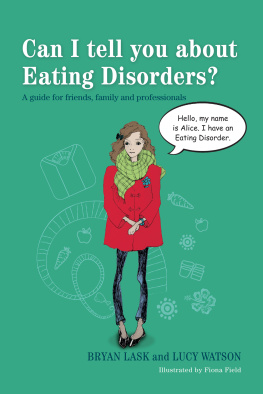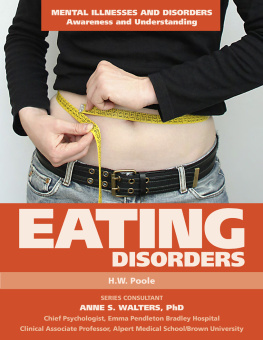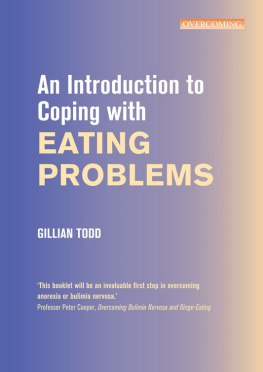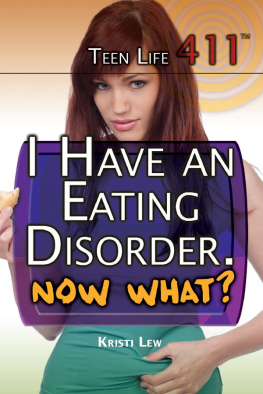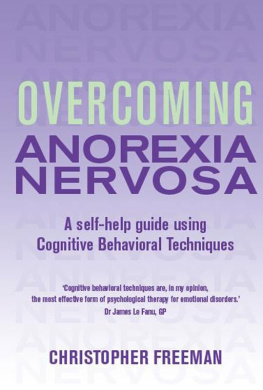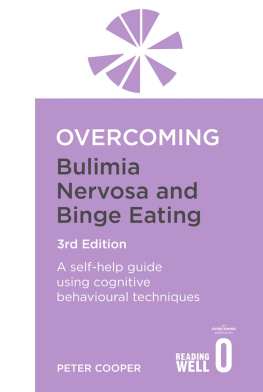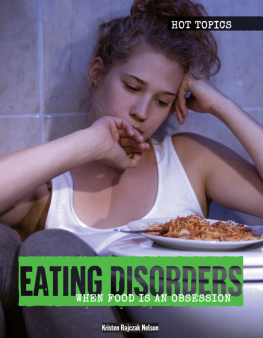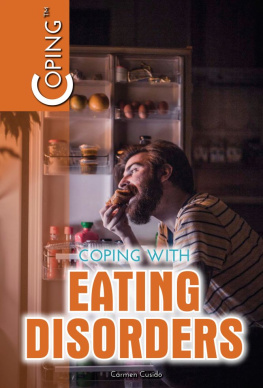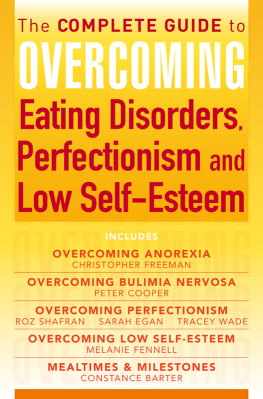Also available
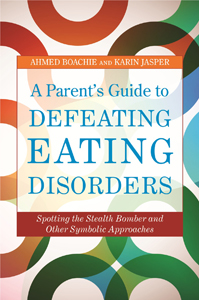
A Parents Guide to Defeating Eating Disorders
Spotting the Stealth Bomber and Other Symbolic Approaches
Ahmed Boachie and Karin Jasper
Foreword by Dr. Debra Katzman
ISBN 978 1 84905 196 5
eISBN 978 0 85700 528 1
Building a supportive and open relationship with young people suffering from eating disorders is key to assisting the recovery process. This book is packed with metaphorical explanations that will allow parents and caregivers to ally themselves with treatment rather than the eating disorder, and take positive steps with their child towards a full and lasting recovery.
Written by experienced eating disorder specialists, the book will help caregivers to reach out to young people having difficulty cooperating with treatment. Its effective use of analogies and metaphors helps to crystallize a practical understanding of eating disorders and the crucial aspects of the treatment process. Integrating medical, psychological, and narrative aspects, as well as the visual (with illustrations), it encourages the reader, and by extension the sufferer, to conceptualize each step towards health.
This book will be an invaluable tool for families, friends, and those working with young people suffering from eating disorders. The fresh perspective will also appeal to mental health professionals and anyone else working in the field.

Can I tell you about Eating Disorders?
Can I tell you about?
The Can I tell you about? series offers simple introductions to a range of limiting conditions and other issues that affect our lives. Friendly characters invite readers to learn about their experiences, the challenges they face and how they would like to be helped and supported. These books serve as excellent starting points for family and classroom discussions.
Other subjects covered in the Can I tell you about? series
ADHD
Adoption
Anxiety
Autism
Asperger Syndrome
Asthma
Cerebral Palsy
Dementia
Diabetes (Type 1)
Dyslexia
Dyspraxia
Epilepsy
ME/Chronic Fatigue Syndrome
OCD
Parkinsons Disease
Selective Mutism
Stammering/Stuttering
Stroke
Tourette Syndrome
Can I tell you about Eating Disorders?
A guide for friends, family and professionals
BRYAN LASK AND LUCY WATSON
Illustrated by Fiona Field

Jessica Kingsley Publishers
London and Philadelphia
First published in 2014
by Jessica Kingsley Publishers
73 Collier Street
London N1 9BE, UK
and
400 Market Street, Suite 400
Philadelphia, PA 19106, USA
www.jkp.com
Copyright Bryan Lask and Lucy Watson 2014
Illustrations copyright Fiona Field 2014
All rights reserved. No part of this publication may be reproduced in any material form (including photocopying or storing it in any medium by electronic means and whether or not transiently or incidentally to some other use of this publication) without the written permission of the copyright owner except in accordance with the provisions of the Copyright, Designs and Patents Act 1988 or under the terms of a licence issued by the Copyright Licensing Agency Ltd, Saffron House, 610 Kirby Street, London EC1N 8TS. Applications for the copyright owners written permission to reproduce any part of this publication should be addressed to the publisher.
Warning: The doing of an unauthorised act in relation to a copyright work may result in both a civil claim for damages and criminal prosecution.
Library of Congress Cataloging in Publication Data
A CIP catalog record for this book is available from the Library of Congress
British Library Cataloguing in Publication Data
A CIP catalogue record for this book is available from the British Library
ISBN 978 1 84905 421 8
eISBN 978 0 85700 797 1
Lucy dedicates this, her first book, to Mum and Dad, Ed and Pops for no matter how many fights are had, family is where life starts and love never ends.
Bryan dedicates this book to all the children with eating problems whom he has treated and who have taught him so much.
Acknowledgements
Many thanks go to Fiona Field for her wonderful illustrations; and to our colleagues at JKP for giving us the opportunity to write this book, but to Lucy Buckroyd in particular for being so patient and understanding!
Contents
Introduction
This book has been written for boys and girls aged about 715 years old to help them to understand and learn about the different eating disorders. It tells them what types of eating disorders there are, what it feels like to have them and how they can help.

There are many different types of eating disorders. Ive got one type called Anorexia Nervosa but let me introduce my friends Beth, Freddie, Sam and Francesca who have other types



So you see, we all have different eating disorders and we want to tell you about them, what it feels like to have them, and how you might help us deal with them if you want to.

We all act and look like everybody elseapart from Alice and Freddie. People with Anorexia Nervosa and Food Avoidance Emotional Disorder are easier to notice than the rest of us; they eat very little so they become very thin.
Alice: You cant see that we have eating disorders. On the outside we look like everybody else.
Sam: Except for you, Alice, and Freddie. Everybody can tell that you have eating disorders because you dont eat and you are really skinny.
Alice: Dont be silly, Sam! Im fatter than all of you!
Sam: Isnt that the problem with Anorexia Nervosa? It makes you feel fat when actually youre thin.
Alice: Anyway, as I was saying, you wouldnt be able to tell we have our eating disorders straightaway as we act like everybody else.
Beth: We love to do things just like what other children our age do. We like swimming, tennis, running, reading, drawing, playing gamesall sorts.
Francesca: The main way you might be able to spot we have eating disorders is if you see us around food.
All: EURGHfood!

It is not because we simply dont like certain types of food. We all have different reasons for avoiding food which we will try to explain.
Alice: Most people dont realise it, but they may naturally avoid certain types of food. Most children love sweets, cakes and other sweet things; but dont like eating celery, Brussels sprouts or other sour things. If you dont like a food because of its smell, taste or what it looks like, then you would naturally try to avoid it (even when your mum tells you just to try a tiny bit!).
Next page
